The Strongest Image?
Which of today’s seven featured images is the strongest? Why?
What’s Up?
I headed down to the lake for sunset and hung out by The Perch. The sky color was gorgeous, and I had a few Boat-tailed Grackles land. But there were no fly-bys in the color. I spent most of the day watching more March Madness games on TIVO and finally finished watching the 32 first round games. Today is Monday 21 March 2022. The forecast for this morning is for clear skies with a northeast breeze. You know where I will be. Wherever you are and whatever you are doing, I hope that you too have a great day. This blog post took about two hours to prepare and makes eleven days in a row with a new one.
Please remember to use the B&H and Amazon links on most blog pages and always in the right column or to use the BIRDSASART discount code at checkout when purchasing your new gear from Bedfords. And please consider joining a BAA IPT. You will be amazed at how much you will learn …
|
|
|
This image was created on 17 August 2021 somewhere in Kenya by Anita North. She used the Sony FE 600mm f/4 GM OSS lens with the Sony FE 1.4x Teleconverter, and The One, the Sony Alpha 1 Mirrorless Digital Camera.. ISO 2500. The exposure was determined by Zebras with ISO on the rear wheel: 1/1600 sec. at f/5.6 (wide open) in Manual mode. AWB. Tracking: Spot S AF-C with Animal-Eye/Face Detection performed very well. Click on the image to enjoy a high-res version. Image courtesy of and copyright 2021: Anita G. North |
A Great Trip Made Possible by a Great Driver-Guide
A photo trip to Africa can be made or broken by the skill and knowledge of your driver guide. On several of my trips to Kenya and Tanzania, I argued often with my co-leader about firing one of the guides … Anita North spent four months in Africa in 2021 — from August thru November. She spent a good deal of time with the same guide, and came home raving about him. Here is what she had to say:
First, I would like to thank Arthur for posting the story of my remarkable photography experiences with Simon Kararei in Kenya. I hope that this blog post inspires others who wish to visit Africa to make a trip with Simon. Simply put, he is the best.
In the early 1980’s I made my first trip to Africa with a small local company in Tanzania. We camped off the beaten path at several locations. Amazingly, we pitched tents on the floor of Ngorongoro Crater; there were no lodges on the rim and the crater was densely populated with wildlife. Over the decades, I visited Tanzania several times but had never explored Kenya. I began photographing 2016 and was determined to get to Kenya.
I recalled a photographer who had mentioned a terrific driver-guide in Kenya but remembered only his first name: Simon. Almost miraculously, I was able to find him on social media. Or so I thought. When I contacted him, he told me that I had reached the wrong Simon, but he knew exactly who I was looking for, his friend and neighbor — Simon N. Kararei.
Each segment of my trip the I did with Simon was flawlessly planned and executed. I loved he Simon offered a variety of lodging options. On my travels, I learned that Simon was a highly respected in his community and served as a mentor for other aspiring driver-guides.
Most nature photographers appreciate the critical importance of a wildlife guide. All the amazing opportunities I had in Kenya during my two trips were due to Simon’s immense knowledge of the animals and their habitats and due to his incredible understanding of photography and his commitment to helping you get the best possible shot. One of his strongest skills is getting the safari vehicle in the best spot and positioning it perfectly every time. He was tireless in his efforts.
|
|
Simon’s Safari Vehicle |
Get in Touch with Simon!
Simon was born and raised in the Masai Mara. He knows and understands the habits of all the animals that share his home. He always had me in the right place at the right time. And he was at his best when the sun was close to the horizon so that I could enjoy the magical early morning light and create dramatic sunset silhouettes. His modified vehicle has the door removed so that you can photograph from a low perspective rather than from the top of a safari van.
Simon is quite flexible and would be glad to help you or your group plan the African trip of a lifetime. Here is his contact info:
Simon N. Kararei
e-Mail: skararei@gmail.com
What’s App #: +254717457601
|
|
|
This image was created on 3 September 2021 somewhere in Kenya by Anita North. She used the Sony FE 600mm f/4 GM OSS lens, the Sony FE 2.0x Teleconverter, and The One, the Sony Alpha 1 Mirrorless Digital Camera.. ISO 1600. The exposure was determined perfectly by Zebras with ISO on the rear wheel: 1/800 sec. at f/8 (wide open) in Manual mode. AWB. Tracking: Spot S AF/C with Animal-Eye/Face Detection performed perfectly. Click on the image to enjoy the high-res version. Image courtesy of and copyright 2021: Anita G. North |
A Note From Simon
I was born in Maasai Mara and grew up there. I have been leading safaris here and in other parks in Kenya and Tanzania for more than 15 years. I love Nature! Guiding is my passion and career and I just love helping photographers to make great images. I did my extensive forestry training in 1998. From 2001 to 2004 I worked with Basecamp Mara where I helped create various tree plantation woodland projects to conserve the environment. While I was working with Basecamp I got inspired and did my guiding training with Kenya’s professional guiding association and did my field training with the WWF Mara Monitoring program. In 2005, I began guiding at Fig Tree Camp. From 2006 to 2008 I worked with Kicheche Camps. At that time, I worked with several other guides to create the Olare Conservancy. In 2009 I set out on my own and started my own small private guided safari business. My business grew slowly, and I now have clients from around the globe. I work with a group of 4 other excellent Maasai guides. I guide both single photographers and larger photographic groups in addition to private individuals and families as well.
Thanks, Anita, for helping me to get my name out there. Lots of love. God 🙏 bless you a million times over.
Simon
|
|
|
This image was created on 3 September 2021 somewhere in Kenya by Anita North. She used the Sony FE 600mm f/4 GM OSS lens and The One, the Sony Alpha 1 Mirrorless Digital Camera. IS 20000. The exposure was determined via Zebras with ISO on the rear wheel: 1/200 sec. at f/4 (wide open) in Manual mode. AWB. Tracking: Spot S with Animal/Face-Eye Detection performed perfectly. Be sure to click on the image to enjoy a higher-res version. Image courtesy of and copyright 2021: Anita G. North
|
Sony’s High ISOs
Kudos to Anita for exposing to the right and not worrying about the ISO settings. The average ISO for today’s seven featured images is just under 6000, yet there is virtually no visible noise in any of the images. That is due in part to the quality of the a1’s sensor, in part due to exposing properly to the right, and in part due to the beyond remarkable plug-in, Topaz DeNoise.
Great Topaz News!
Folks who use the BAA Topaz link to purchase Sharpen AI, DeNoise AI, or the Utility Bundle (or any other Topaz plug-ins), will receive a 15% discount by entering the ARTHUR15 code at checkout. If the stuff is on sale (as it usually is), you save 15% off the sale price! To get the discount you must use my link and you must enter the discount code. Be sure to start with this link.
Those who purchase Sharpen AI, DeNoise AI, or any other Topaz plug-ins using my link and then entering the ARTHUR15 code at checkout can e-mail to request a short Getting Started with Topaz e-Guide. Please include a copy of your Topaz receipt that shows the discount. Aside from the basics, the guide explains how to install the plug-ins so that they appear in the Photoshop Filter Menu.
|
|
|
This image was created on 9 September 2021 somewhere in Kenya by Anita North. She used the Sony FE 600mm f/4 GM OSS lens and The One, the Sony Alpha 1 Mirrorless Digital Camera. IS 8000. The exposure was determined via Zebras with ISO on the rear wheel: 1/2000 sec. at f/4 (wide open) in Manual mode. AWB. Tracking: Zone with Animal/Face-Eye Detection performed perfectly. Be sure to click on the image to enjoy a higher-res version. Image courtesy of and copyright 2021: Anita G. North
|
Sony Tracking: Zone AF
Shooting flight with Sony Tracking: Zone AF is a remarkable experience. And with Animal/Face-eye detection enabled the AF performance when tracking running cats is equally amazing.
|
|
|
This image was created on 22 November 2021 somewhere in Kenya by Anita North. She used the Sony FE 600mm f/4 GM OSS lens and The One, the Sony Alpha 1 Mirrorless Digital Camera. IS 4000. The exposure was determined via Zebras with ISO on the rear wheel: 1/1600 sec. at f/8 (stopped down two stops) in Manual mode. AWB. Tracking: Zone with Animal/Face-Eye Detection performed perfectly. Be sure to click on the image to enjoy a higher-res version. Image courtesy of and copyright 2021: Anita G. North
|
On Working Hard
Anita North works harder than any photographer I know. Including and especially me. She is relentless. She has worked very hard for the past six years to improve her skills both in-the-field and at the computer. I’d say that she has done quite well.
|
|
|
This image was created on 22 November 2021 somewhere in Kenya by Anita North. She used the Sony FE 600mm f/4 GM OSS lens with the Sony FE 1.4x Teleconverter, and The One, the Sony Alpha 1 Mirrorless Digital Camera.. ISO 2500. The exposure was determined by Zebras with ISO on the rear wheel: 1/2000 sec. at f/5.6 (wide open) in Manual mode. AWB. Tracking: Zone AF-C with Animal-Eye/Face Detection performed very well. Click on the image to enjoy a high-res version. Image courtesy of and copyright 2021: Anita G. North |
November 22
22 November is a significant date in American history. Considering that three of today’s seven featured images were created on that date in 2021, I am quite sure that Anita will remember the date fondly for many years to come.
|
|
|
This image was created on 22 November 2021 somewhere in Kenya by Anita North. She used the Sony FE 600mm f/4 GM OSS lens with the Sony FE 1.4x Teleconverter, and The One, the Sony Alpha 1 Mirrorless Digital Camera.. ISO 3200. The exposure was determined by Zebras with ISO on the rear wheel: 1/2000 sec. at f/5.6 (wide open) in Manual mode. AWB. Tracking: Zone AF-C with Animal-Eye/Face Detection performed very well. Click on the image to enjoy a high-res version. Image courtesy of and copyright 2021: Anita G. North |
Thanks!
Big-time thanks to Anita for allowing me to share some of the great images from her four-month trip to Africa with you hear today.
Typos
With all blog posts, feel free to e-mail or to leave a comment regarding any typos or errors.

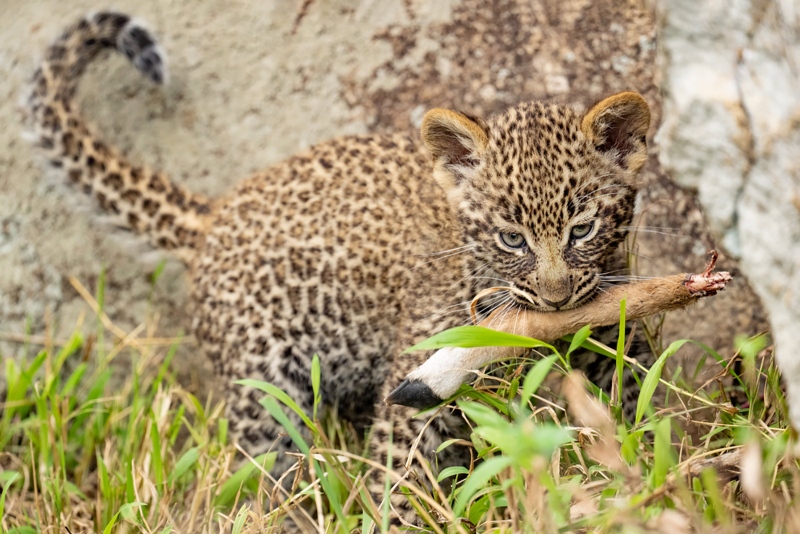
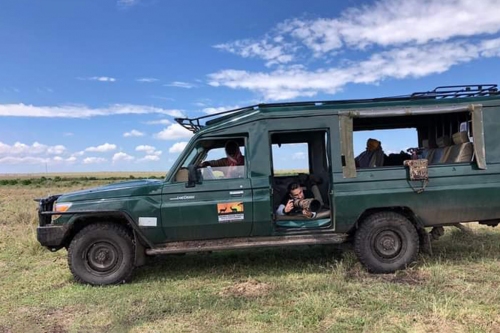
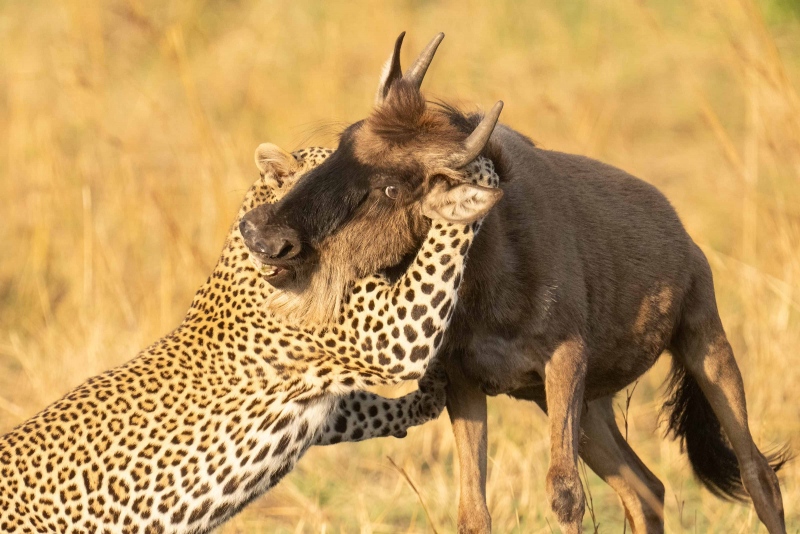
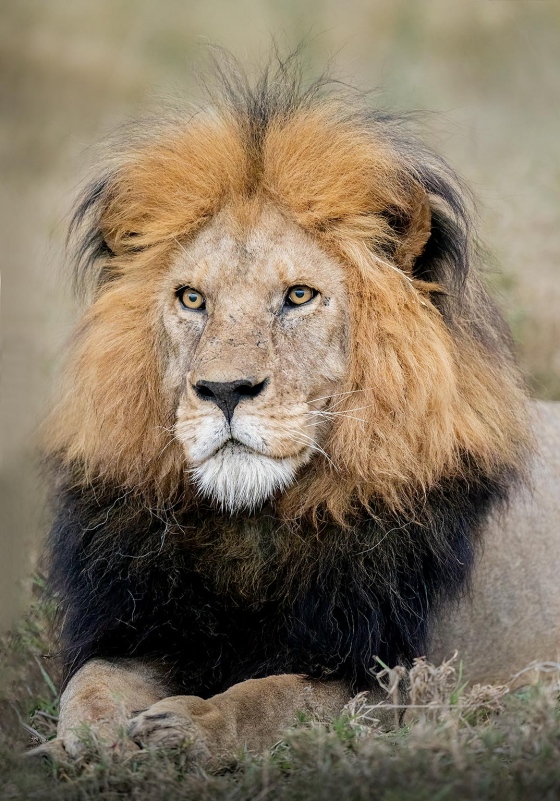
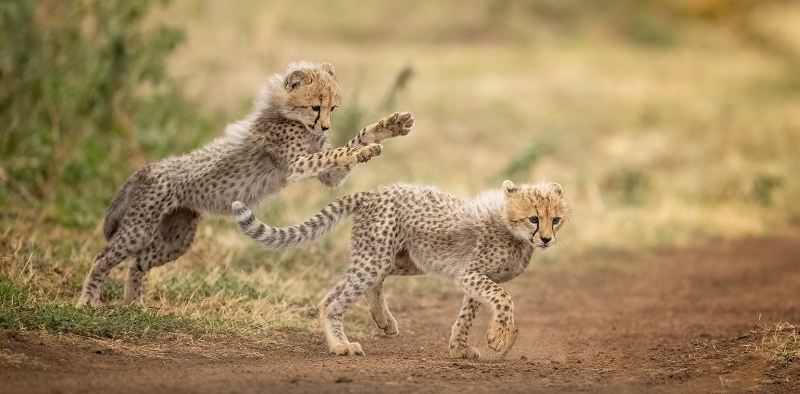
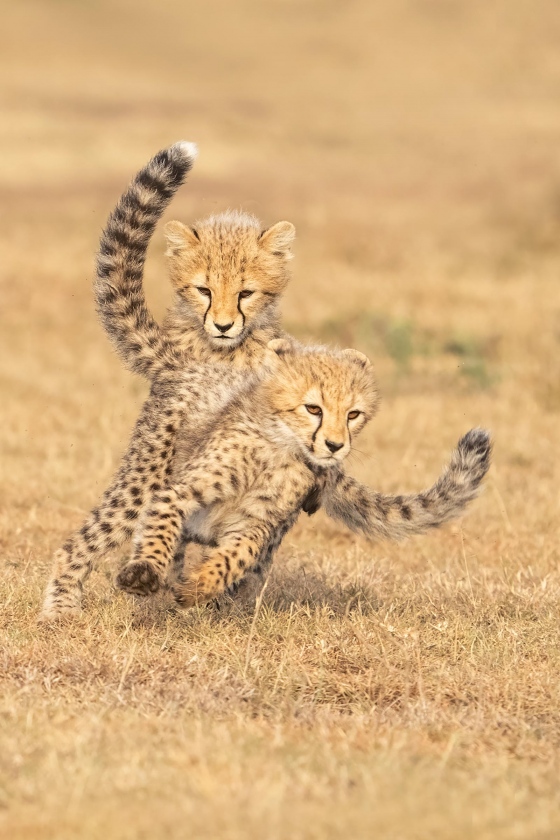
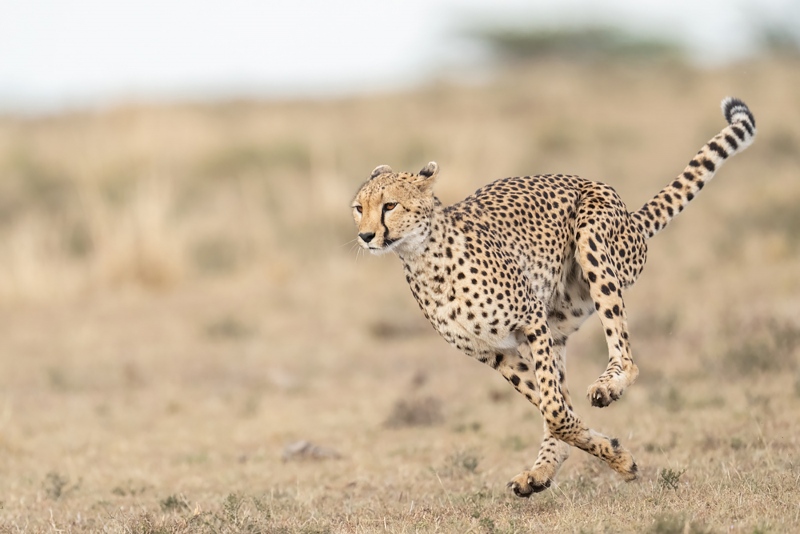
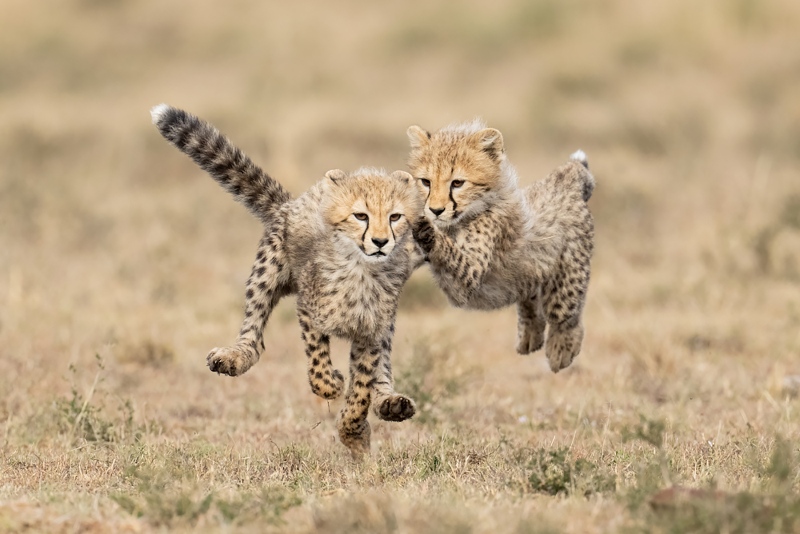













I agree!
Ruthie
I think #2 – because of the look on the wildebeest’s face. Shows emotion.
Artie I hope your having a good day. I love it when you show other photographers work. I know your very proud of your students and their success with photography. You have played such a big part in helping so many. As for Anita’s photos all are excellent, which one to pick . I would be happy with any of the above. The wildebeest eye is something really tells the story. I think for me it is the last shot of the cubs. Anita captured both in the air coming right at you. I can attest to Anita’s determination and passion for photography. Nicely done Anita.
Absolutely wonderful — all of them!
All photos are great, # 5 extraordinary!
All 7 photos are cute and well made!!
THE CUBS ARE THE CUTY OF THE BUNCH; HOWEVER THEY ARE ALL EXCELLENT SHOTS.
All of the pics are great. The leopard taking down the wildebeest is the type of shot everyone on safari hopes to get. The lion portrait is superb. My favorite though is image 5, the cheetah cubs playing. The cubs running towards the camera, the angle of the first cub as its trying to turn away from its sibling make it a strong shot.
I love #5 Anita!